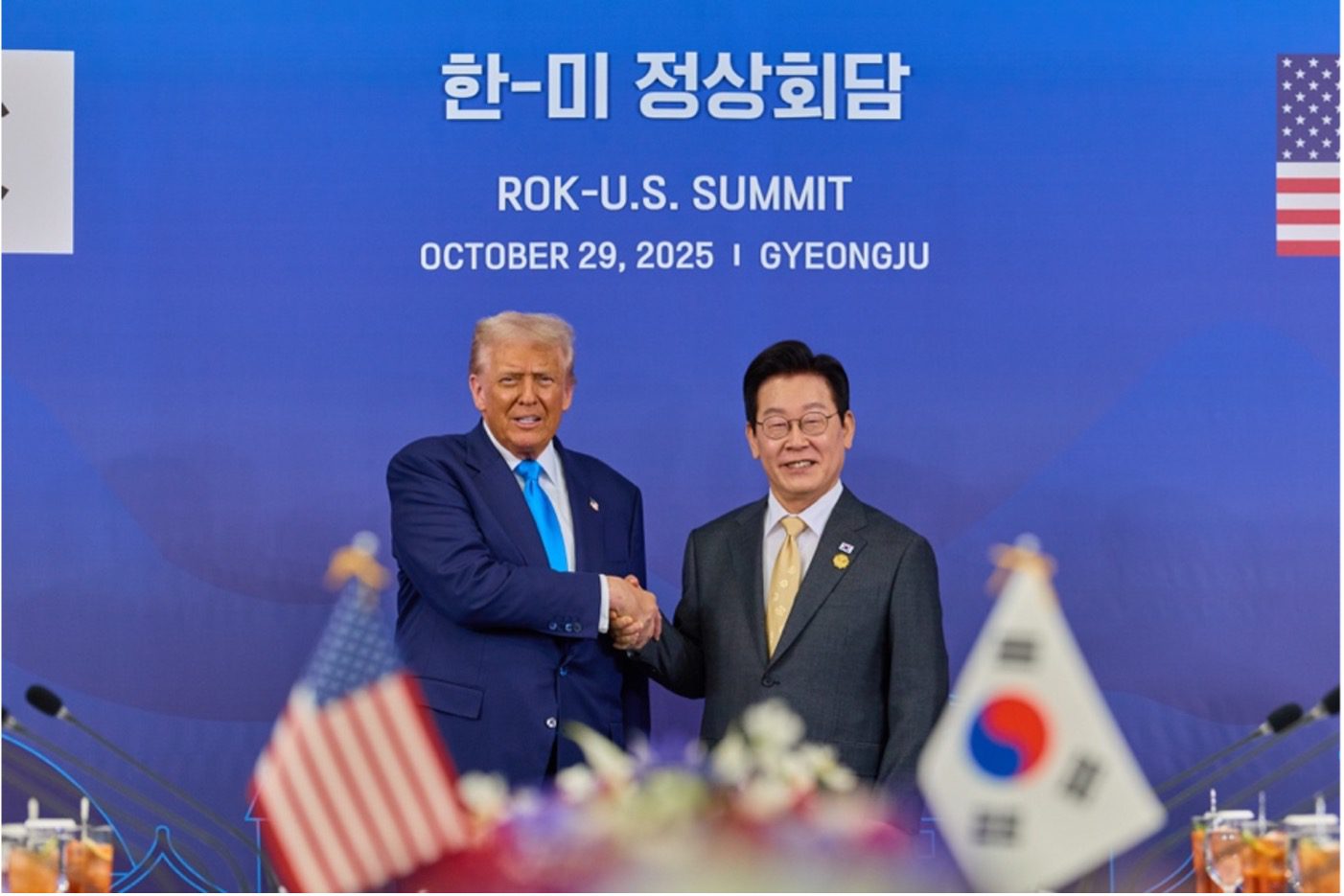The BGA Korea team, led by Managing Director B.J. Kim, and Global Trade and Economics Managing Director Nydia Ngiow wrote an update to clients on the U.S.-Korea trade deal.
Context
- Presidents Lee Jae Myung of Korea and Donald Trump of the United States finalized the details of their trade deal at a summit in Gyeongju, Korea, October 29, on the sidelines of the Asia-Pacific Economic Cooperation (APEC) Summit. The two had earlier agreed on the framework of the bilateral agreement August 25, with negotiations over the details continuing at the ministerial level.
- Trump has been consistently more courteous toward Korea, even when Korean negotiators remained firm in resisting U.S. demands. Lee continued to emphasize that the final deal will need to be “commercially rational,” which aptly describes the deal that was struck. This reflects and reinforces Korea’s importance to the United States. Since 2023, Korea has become the largest foreign investor in the U.S. economy. Korean businesses are building automobile and semiconductor factories in the country and are producing the largest number of foreign-business-created jobs in the United States. Korea is also seen as the only ally that can meaningfully help the U.S. Navy close the gap with China in building and maintaining naval fleets in the Indo-Pacific.
Significance
- The two presidents agreed to lower U.S. tariffs on most key Korean products from 25 percent to 15 percent. This includes automobiles, Korea’s largest export item to the United States, matching the rates applied to Japan and the European Union. This is expected to eliminate the price disadvantages Korean automakers had to face in the U.S. market for the past few months. Tariffs on auto parts will similarly be cut to 15 percent.
- The absence of any mention of steel tariff reductions has been noted as a shortcoming. Korea’s steel exports to the United States fell 11 percent year on year in the first half of 2025, a decline attributed to the 50 percent U.S. tariff on steel and aluminum imports. Small and medium-sized Korean manufacturers have suffered significant losses because the tariff also applies to downstream products containing steel, affecting around 500 such items.
Implications
- The two leaders agreed to split Korea’s commitment of investing $350 billion in the United States into a $200 billion cash investment over the next 10 years — with a maximum of $20 billion each year — and a $150 billion shipbuilding cooperation project known as the Maritime and Shipbuilding Growth Alliance (MASGA) to be financed through various means. Trump had originally insisted since the end of August that all $350 billion come in cash up front, as Japan had agreed to do with its $550 billion investment. Korean negotiators were finally able to break this Japan mold with the above arrangement.
- With the finalization of this trade deal, the final layer of uncertainty has been removed, providing clarity and stability for bilateral economic and business ties. Other accompanying agreements, such as those on minerals mining, science and technology, energy and several others signed in Korea during Trump’s visit, reinforce to U.S. businesses the upgrade of Korea’s status as a key partner for the United States.
If you have any further questions or comments, please contact BGA Korea Managing Director B.J. Kim at bjkim@bowergroupasia.com or Managing Director for Global Trade & Economics Nydia Ngiow at nngiow@bowergroupasia.com.
Best regards,
BGA Korea Team

Managing Director
B.J. supports BGA clients on the ground in Korea, advising them on stakeholder engagement and larger government affairs and public policy matters in Seoul. A former Korean diplomat, B.J. has advised international firms on political-economic and policy-regulatory affairs since 2003, offering analytical and advisory services on legislative, regulatory and political issues. He also has offered companies hands-on support in their engagement in Korea. Prior to his career in consulting, B.J. was a diplomat serving two of Korea’s trade ministers as policy counselor and special assistant, developing international economic policies and public communications strategies on export and investment promotion and working ...
Read More






















